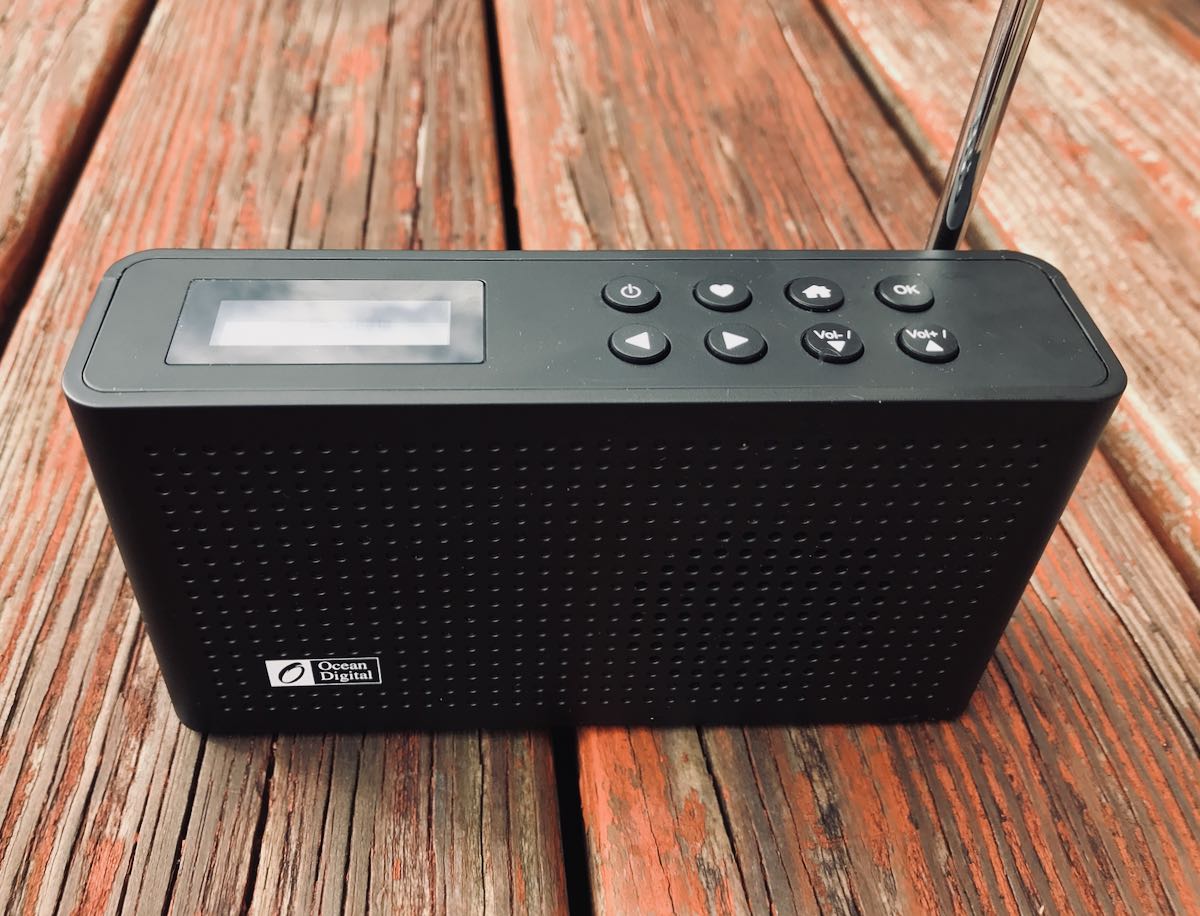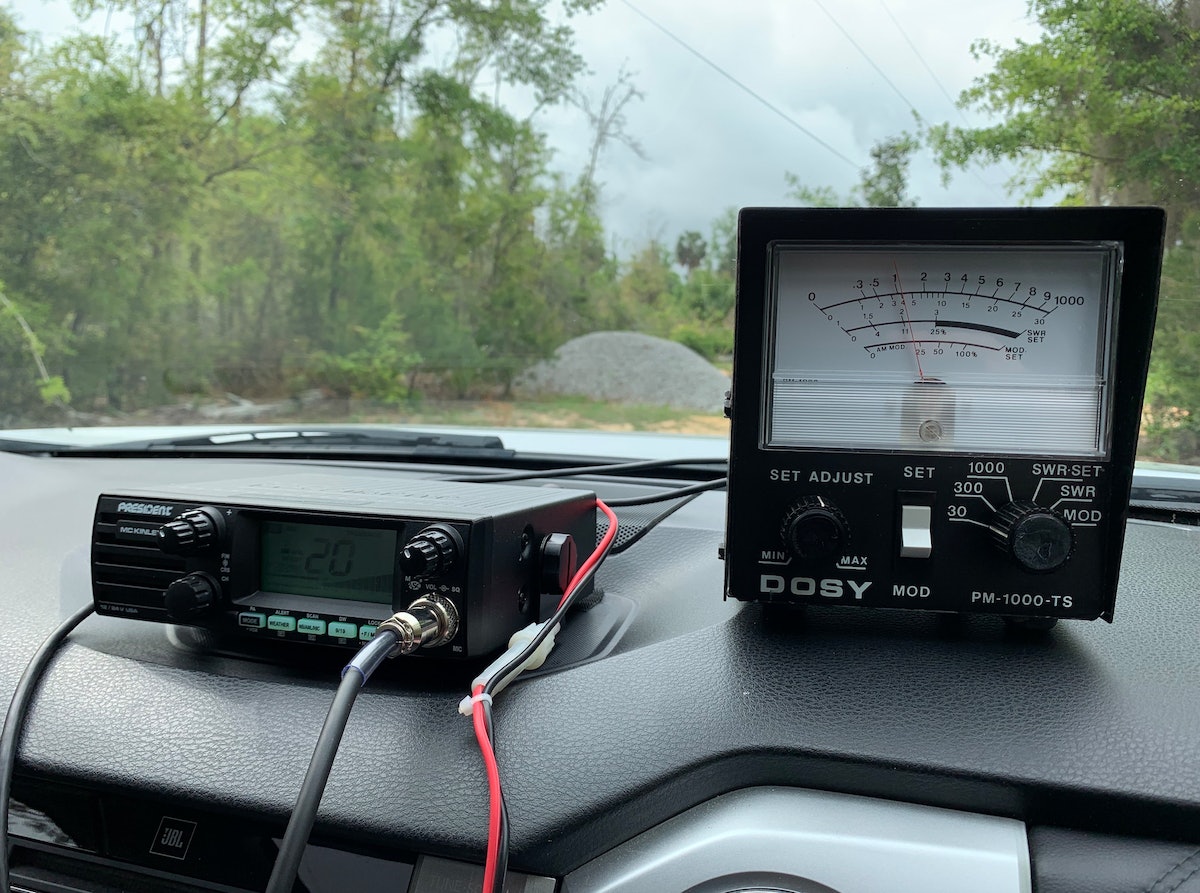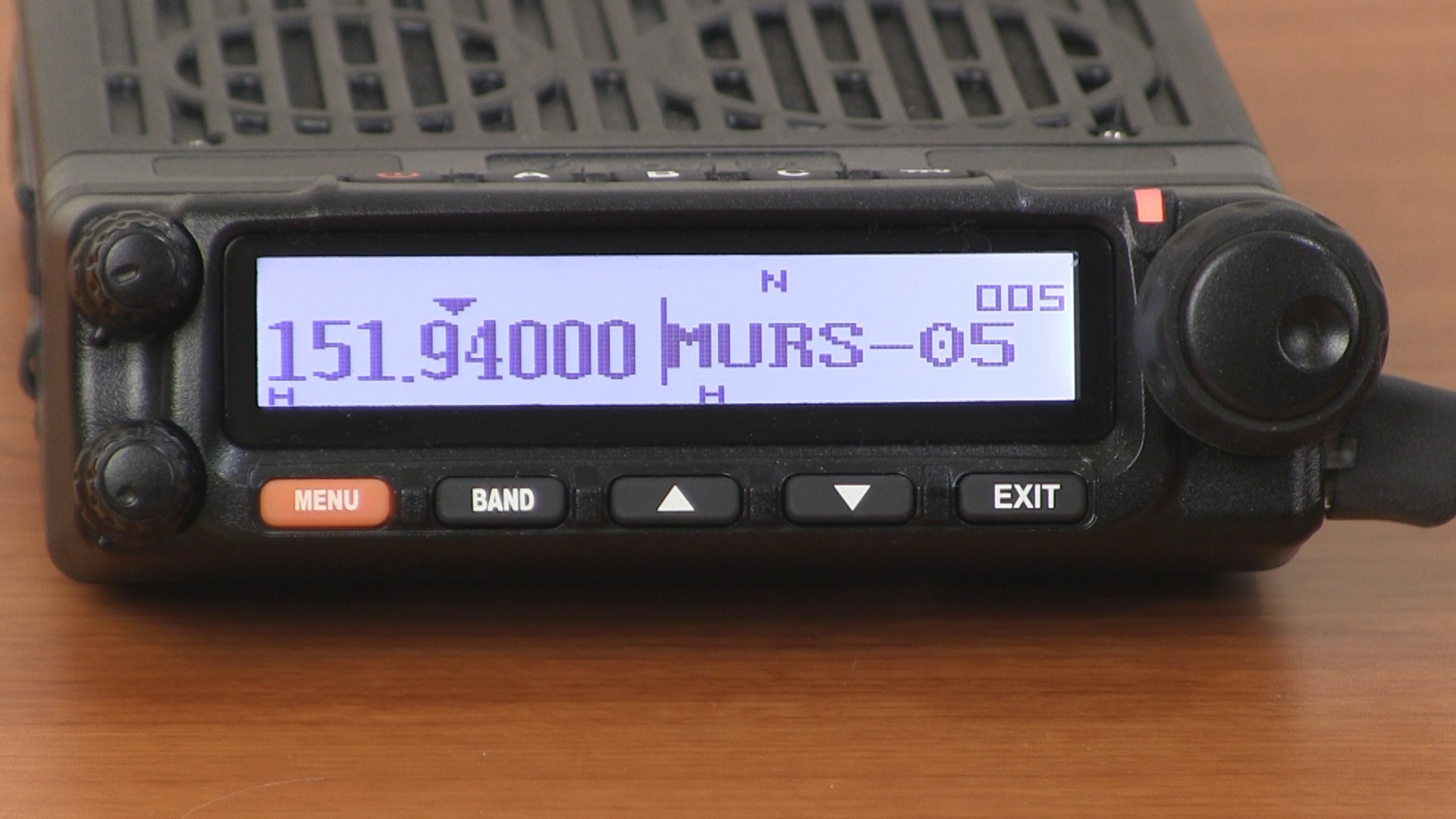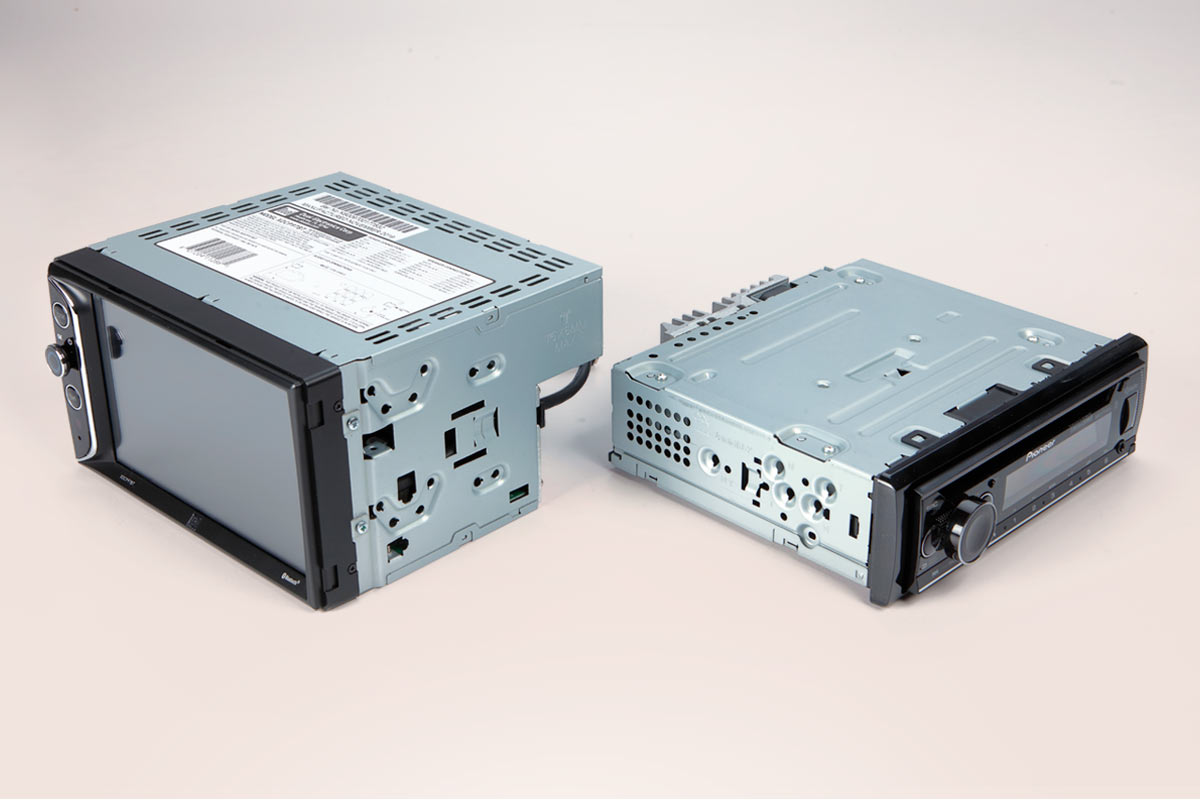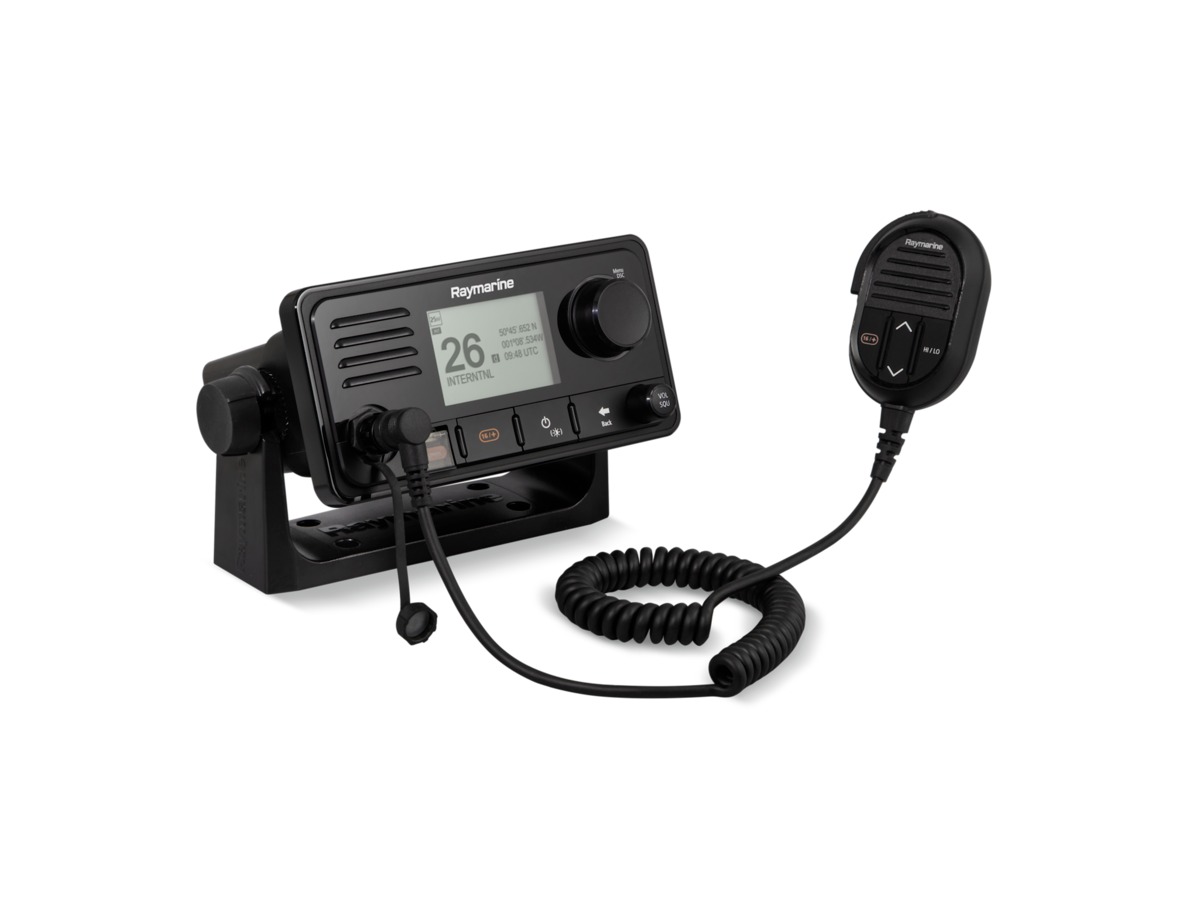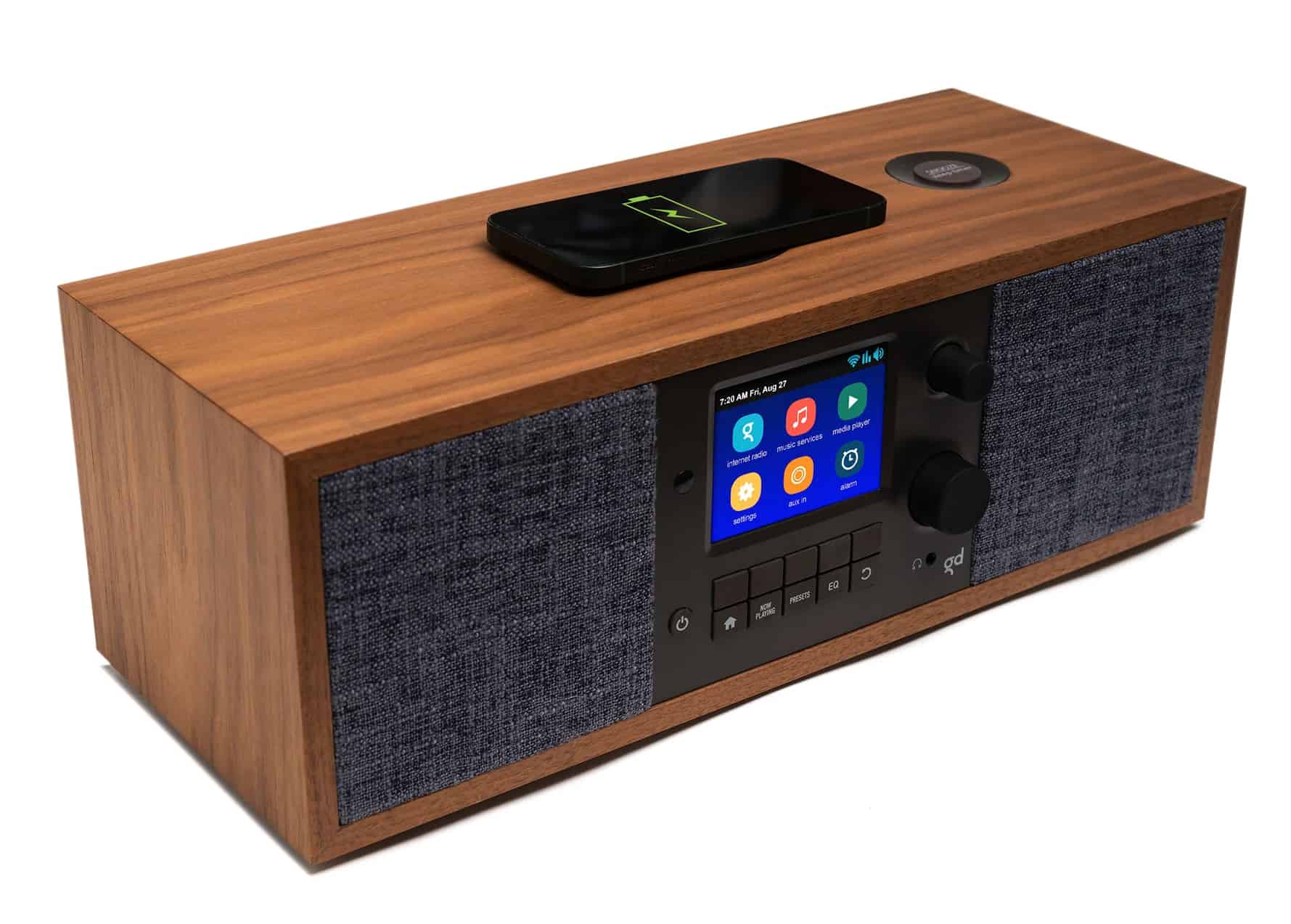Home>Devices & Equipment>Radio>What Is A NOAA Radio
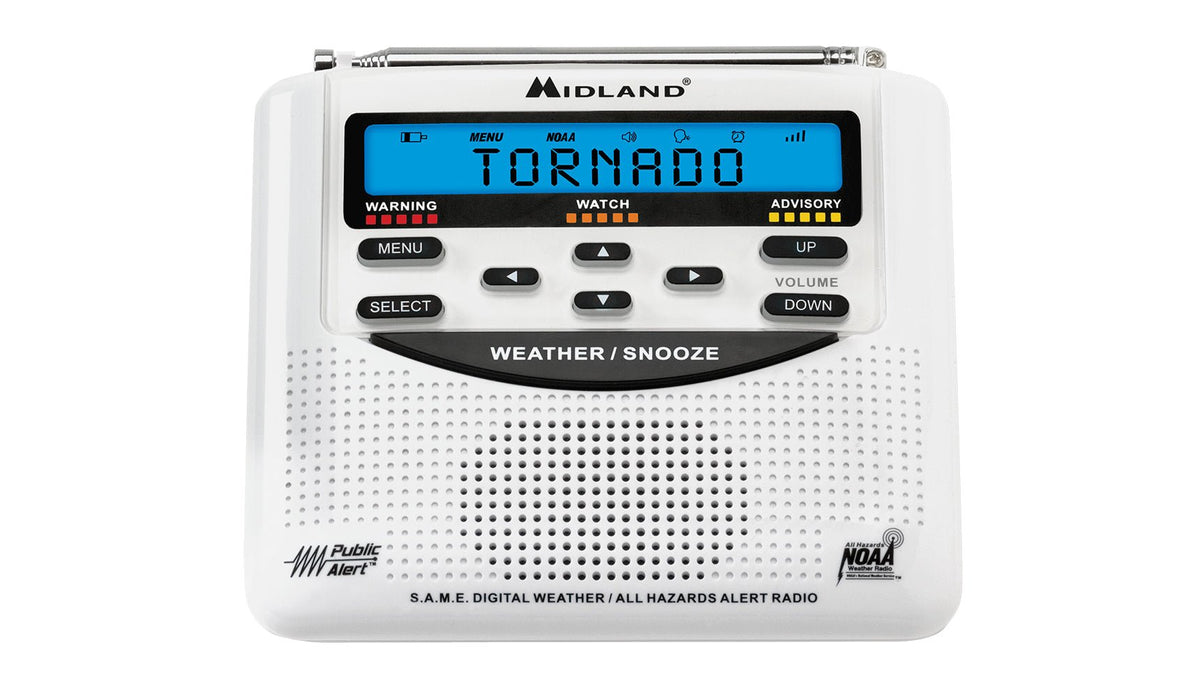

Radio
What Is A NOAA Radio
Published: November 17, 2023
Learn about the importance of NOAA Radio and how it enhances your radio experience. Stay informed about weather alerts and emergency broadcasts with this handy device.
(Many of the links in this article redirect to a specific reviewed product. Your purchase of these products through affiliate links helps to generate commission for AudioLover.com, at no extra cost. Learn more)
Table of Contents
Introduction
NOAA radios, also known as National Oceanic and Atmospheric Administration radios, are essential devices for staying informed and prepared during emergency situations. These radios, specifically designed to receive weather alerts and emergency notifications, play a crucial role in providing timely and life-saving information in times of severe weather conditions, natural disasters, and other emergencies.
With the increasing frequency and intensity of extreme weather events, having a reliable method of receiving critical updates and warnings is paramount. In this article, we will explore the history, purpose, and benefits of NOAA radios, and discuss how they work and what features to consider when purchasing one.
Whether you live in an area prone to hurricanes, tornadoes, floods, or other hazardous weather conditions, or you simply value being prepared for any emergency, a NOAA radio should be an essential part of your emergency preparedness kit.
Join us as we dive into the world of NOAA radios and discover how these small yet powerful devices can help keep you informed, safe, and prepared when it matters most.
History of NOAA Radios
The history of NOAA radios dates back to the early 1950s when the United States Weather Bureau, the precursor to the National Weather Service (NWS), realized the importance of communicating weather forecasts and warnings to the public. Initially, weather information was primarily transmitted through traditional media channels, such as radio and television. However, it soon became evident that a more direct and efficient method was needed to reach individuals in remote areas and during power outages.
In response to this need, the National Oceanic and Atmospheric Administration (NOAA) developed a network of Weather Radio stations across the United States. These stations utilized a specific frequency range known as the Very High Frequency (VHF) band to transmit continuous weather updates, forecasts, and emergency alerts. These radio stations, collectively known as NOAA Weather Radio (NWR), quickly became a reliable and accessible source of vital information for both the public and emergency management agencies.
The early NOAA radios were primarily used by emergency managers, government agencies, and weather enthusiasts. However, as technology advanced and the potential for severe weather events became more apparent, the demand for these radios grew among the general public. In the 1990s, consumer-oriented NOAA radios started to appear on the market, offering individuals the opportunity to stay informed and prepared for emergencies.
Over the years, NOAA radios have undergone significant advancements. Early models required manual tuning to receive weather updates, but modern versions feature digital tuning and automatic alert capabilities. With the integration of new technologies, such as SAME (Specific Area Message Encoding), NOAA radios can now provide targeted alerts for specific geographic areas, ensuring that individuals receive only the information relevant to their location.
Today, NOAA radios have become an essential tool for emergency preparedness, with millions of people relying on them to receive timely and accurate weather information. The evolution of these radios has not only enhanced their functionality and usability but has also helped save countless lives by providing early warning and crucial updates during emergency situations.
Purpose and Benefits of NOAA Radios
The primary purpose of NOAA radios is to provide reliable and timely weather information along with emergency alerts to the general public. These radios serve as a vital link between the National Weather Service (NWS) and individuals, helping to keep communities informed, prepared, and safe during hazardous weather conditions and other emergencies. Let’s take a closer look at the key benefits of NOAA radios:
- Early Warning System: NOAA radios provide early warnings for severe weather events such as hurricanes, tornadoes, floods, thunderstorms, and winter storms. By receiving these timely alerts, individuals can take proactive measures to protect themselves, their loved ones, and their property.
- Localized Information: With the ability to receive Specific Area Message Encoding (SAME) alerts, NOAA radios can provide targeted information specific to the geographical area of the user. This ensures that individuals receive alerts and updates that directly impact their location, increasing the relevance and usefulness of the information.
- 24/7 Accessibility: NOAA Weather Radio operates 24 hours a day, 7 days a week, providing continuous access to weather forecasts, current conditions, and emergency alerts. Unlike other forms of media, such as television or internet, NOAA radios are not dependent on electricity or an internet connection, making them a reliable source of information during power outages and other disruptions.
- Automatic Alerting Capability: Many NOAA radios come equipped with an automatic alerting feature. This means that when a severe weather warning or emergency alert is issued for the programmed area, the radio will automatically activate and provide an audible and visual notification, even if it is turned off or on a different channel. This ensures that users never miss critical information, even while sleeping or engaged in other activities.
- Reliable Communication Channel: NOAA radios offer a direct and reliable communication channel between the NWS and the public. This helps bridge the gap between official weather forecasts and the individuals who need them the most, ensuring that accurate and up-to-date information reaches those who may be at risk.
Overall, the purpose and benefits of NOAA radios revolve around keeping individuals informed, prepared, and safe during severe weather events and emergencies. These radios play a crucial role in mitigating the impacts of hazardous conditions, helping communities to take timely and appropriate actions to protect life and property.
How NOAA Radios Work
NOAA radios operate on the Very High Frequency (VHF) band, specifically within the frequency range of 162.400 to 162.550 MHz. They receive signals transmitted by local NOAA Weather Radio stations, which are part of the National Weather Service (NWS) network. Here is a breakdown of how NOAA radios work:
- Receiving Signals: NOAA radios are equipped with an antenna that captures the VHF signals transmitted by the nearest Weather Radio station. The antenna converts the electromagnetic wave into an electrical signal, which is then processed by the radio’s internal circuitry.
- Tuning In: Once the signal is received, the NOAA radio allows users to tune in to the specific frequency of their local Weather Radio station. This can usually be done manually by adjusting the radio’s tuning dial or digitally via a menu interface.
- Broadcasting Weather Information: Once tuned in to the correct frequency, the NOAA radio will continuously receive broadcasts of weather information from the NWS. This includes weather forecasts, current conditions, and any emergency alerts or warnings issued by the NWS for the programmed area.
- Specific Area Message Encoding (SAME): NOAA radios equipped with SAME technology can receive and decode these specialized alerts. SAME allows for targeted alerts by programming the radio to receive alerts for a specific county or area. The radio checks the header of each alert message to determine if it matches the programmed location, and only activates the alert if there is a match.
- Alert Notifications: When a severe weather warning or emergency alert is received, NOAA radios with an automatic alerting feature will activate an audible and visual notification to alert the user. This ensures that users are immediately aware of any potential threats or hazardous conditions, even if the radio is turned off or on a different channel.
- Battery Power: Many NOAA radios operate on batteries, making them portable and ideal for use during power outages or when on the go. It is important to keep the batteries in the radio charged or have backup batteries readily available to ensure uninterrupted operation.
NOAA radios are designed to be user-friendly and accessible to individuals without specialized knowledge or technical expertise. By understanding how these radios work, users can confidently operate them to receive accurate and timely weather information, empowering them to make informed decisions and stay safe during severe weather events and emergencies.
Understanding Emergency Alerts on NOAA Radios
When it comes to emergency alerts on NOAA radios, it’s important to understand the different types of alerts and how they are conveyed. NOAA Weather Radio stations broadcast a range of alerts to keep the public informed about potential hazards and emergency situations. Here’s what you need to know:
- Weather Watches: A weather watch indicates that conditions are favorable for the development of severe weather. It serves as an early warning to the public, urging them to stay alert and be prepared for potential hazardous conditions. Examples include tornado watches, hurricane watches, and severe thunderstorm watches.
- Weather Warnings: A weather warning is issued when hazardous weather conditions are imminent or occurring in the specified area. These alerts indicate that individuals should take immediate action to protect themselves and their property. Examples include tornado warnings, severe thunderstorm warnings, and flash flood warnings.
- Non-Weather Emergency Alerts: In addition to weather-related alerts, NOAA radios may also receive non-weather emergency alerts such as AMBER Alerts (Child Abduction Emergency) and other civil emergency messages. These alerts are issued by authorized agencies and provide critical information about non-weather emergency situations in the area.
- Specific Area Message Encoding (SAME): SAME technology allows NOAA radios to receive alerts specific to a particular geographic area. This means that users can program their radios to only receive alerts that are relevant to their location. By matching the location code included in the alert header with the programmed location, the radio filters out alerts that do not apply to the user’s area.
- Alert Tones: NOAA radios use a series of distinctive alert tones to notify users of an incoming emergency message. These tones are designed to be attention-grabbing and distinguishable from regular broadcasts. When an alert is received, the radio will emit a loud tone followed by a message providing information about the alert and what actions should be taken.
- Response and Preparedness: When a NOAA radio alerts you to an emergency situation, it is important to take immediate action based on the instructions provided. This may involve seeking shelter, evacuating the area, or taking other precautionary measures to ensure your safety.
Understanding the different types of alerts and their significance is crucial for effectively responding to emergencies. NOAA radios play a vital role in delivering these alerts directly to individuals, allowing them to stay informed, prepared, and ready to take appropriate action to protect themselves and their communities.
Features to Consider When Buying a NOAA Radio
When purchasing a NOAA radio, it’s important to consider several key features to ensure you choose a device that meets your needs and provides reliable emergency communication. Here are some essential features to consider:
- NOAA Weather Radio Compatibility: Ensure that the radio is specifically designed to receive NOAA Weather Radio broadcasts. Look for radios that display the NOAA logo or mention NOAA Weather Radio in their product descriptions.
- Public Alert Certified: Look for radios that are Public Alert certified. This certification ensures that the radio meets specific standards for receiving and displaying emergency alerts.
- Specific Area Message Encoding (SAME): SAME technology allows you to program the radio to receive alerts for a specific area. Consider a radio that offers SAME functionality, so you receive alerts that are relevant to your location.
- Alerting Options: Look for a radio that offers various alerting options, such as audible alarms, visual indicators, and vibration alerts. These features ensure that you are promptly alerted to incoming emergency messages, even if you are in a noisy environment or have impaired hearing.
- Automatic Alerting: Consider radios that have an automatic alerting feature. This means that even if the radio is turned off or tuned to a different channel, it will activate and provide an audible and visual alert when an emergency message is received.
- Built-in Battery Backup: To ensure functionality during power outages, opt for a radio with a built-in battery backup. This allows the radio to operate on battery power when the electricity is down.
- Portability and Durability: If you plan to use the radio on the go or during outdoor activities, consider a portable and durable model. Look for radios that are lightweight, compact, and have a rugged design to withstand harsh conditions.
- Additional Features: Some NOAA radios may offer additional features such as AM/FM radio reception, flashlight, USB charging port, and built-in solar panels. Consider these features based on your specific needs and preferences.
- Reviews and Ratings: Before making a purchase, read reviews and check ratings on different models to gauge their performance, reliability, and customer satisfaction.
- Price and Warranty: Finally, consider the price range of the radios and compare it with their features and quality. Additionally, check if the radio comes with a warranty to ensure peace of mind and customer support.
By considering these features, you can select a NOAA radio that best suits your requirements, ensuring reliable access to weather information and emergency alerts when you need them most.
Tips for Using NOAA Radios Effectively
Using NOAA radios effectively can greatly enhance your preparedness and keep you informed during emergency situations. Here are some tips to help you maximize the benefits of your NOAA radio:
- Keep Your NOAA Radio Programmed and Ready: Ensure that your NOAA radio is programmed with your desired location and alert settings. Regularly check and update the programming to ensure you receive alerts relevant to your area.
- Place Your NOAA Radio in a Central Location: Keep your NOAA radio in a central location in your home or workplace where it can be easily heard by everyone. This ensures that you won’t miss important alerts, even if you are in a different room.
- Test Your NOAA Radio: Periodically test your NOAA radio to make sure it is functioning properly. Many radios have a test button or function that allows you to check the reception and audio quality.
- Keep Spare Batteries: If your NOAA radio operates on batteries, always keep spare batteries on hand. Make it a routine to check and replace the batteries regularly to ensure uninterrupted operation.
- Stay Informed with Regular Weather Updates: Use your NOAA radio to stay up to date with weather forecasts and current conditions. Regularly listen to weather updates to stay informed about any potential weather hazards in your area.
- Take Action When Alerts are Received: When your NOAA radio alerts you to an emergency, take immediate action based on the instructions provided. Follow safety protocols, seek shelter, evacuate if necessary, and stay tuned for further updates.
- Keep Your NOAA Radio Up to Date: Check for firmware or software updates for your NOAA radio and install them as needed. Updates can improve performance, add new features, or address any system vulnerabilities.
- Stay Connected, but Manage Noise: While it’s important to stay informed, be mindful of the noise level from your NOAA radio. Adjust the volume to a level that allows you to hear alerts clearly without causing unnecessary distractions.
- Utilize Additional Features: Explore the additional features of your NOAA radio, such as AM/FM radio reception, flashlight, or USB charging port. These features can provide additional functionality and convenience in emergency situations.
- Regularly Monitor Radio Updates: Check the NOAA Weather Radio and NWS websites for updates on new features, changes to alerting systems, or other important information regarding your NOAA radio.
By following these tips, you can ensure that your NOAA radio is always ready to provide you with critical weather updates and emergency alerts, helping you stay safe, informed, and prepared.
Frequently Asked Questions (FAQs)
Here are some commonly asked questions about NOAA radios:
- Why do I need a NOAA radio?
- Can I receive NOAA radio broadcasts on my regular AM/FM radio?
- How do I program my NOAA radio to receive alerts for my specific area?
- Are NOAA radios waterproof or water-resistant?
- Do NOAA radios work during power outages?
- Can I receive alerts from multiple counties or areas on my NOAA radio?
- How often should I replace the batteries in my NOAA radio?
- Can I use my NOAA radio outside of the United States?
A NOAA radio is essential for receiving weather updates and emergency alerts directly from the National Weather Service (NWS). It keeps you informed and prepared for severe weather conditions and other emergencies.
No, NOAA radio broadcasts use a specific frequency range called the Very High Frequency (VHF) band. Regular AM/FM radios cannot tune into NOAA Weather Radio stations.
Most NOAA radios with SAME (Specific Area Message Encoding) technology allow you to program your radio to receive alerts for a specific county or area. Consult your radio’s manual for instructions on how to program it for your desired location.
Not all NOAA radios are waterproof or water-resistant. Check the specifications of the radio you are considering purchasing to determine if it has any water-resistant capabilities.
If your NOAA radio operates on batteries or has a built-in battery backup, it can still function during power outages. Ensure that you have fresh batteries or a charged backup battery to keep your radio operational.
Yes, many NOAA radios allow you to program multiple counties or areas to receive alerts from. This can be useful if you live close to county boundaries or if you have loved ones in different areas that you want to stay informed about.
It is recommended to replace the batteries in your NOAA radio at least once a year or as instructed by the manufacturer. Regularly check the battery level indicator on your radio to ensure it has enough power for reliable operation.
NOAA radios are specifically designed to receive NOAA Weather Radio broadcasts, which are available in the United States, its territories, adjacent coastal waters, and the surrounding areas of Canada and Mexico. They may not work or receive the same alerts outside of these areas.
If you have specific questions about your NOAA radio, consult the user manual or reach out to the manufacturer for further assistance.
Conclusion
NOAA radios are invaluable tools for staying informed and prepared during severe weather events and emergencies. They provide direct access to weather updates and emergency alerts from the National Weather Service (NWS), ensuring that individuals can take prompt action to protect themselves and their communities.
In this article, we explored the history of NOAA radios and their evolution from being primarily used by emergency management agencies to becoming widely available to the general public. We discussed the purpose and benefits of NOAA radios, emphasizing their role as early warning systems and their ability to provide localized and targeted information.
We also delved into how NOAA radios work, highlighting their ability to receive signals from NOAA Weather Radio stations within the VHF frequency range. We explained the importance of Specific Area Message Encoding (SAME) and the significance of alert tones in notifying users of incoming emergency messages.
Furthermore, we provided tips for using NOAA radios effectively, including programming the radio correctly, regularly testing its functionality, and taking immediate action based on received alerts. We also outlined key features to consider when purchasing a NOAA radio, such as SAME technology, alerting capabilities, and portability.
Lastly, we addressed frequently asked questions regarding NOAA radios, addressing concerns about programming, power outages, waterproofing, and international usage.
By understanding how NOAA radios work and utilizing them effectively, individuals can enhance their emergency preparedness and response efforts. These radios are essential tools in keeping communities safe, and with their help, we can mitigate the impact of severe weather events and other emergencies.
So, whether you live in an area prone to hurricanes, tornadoes, floods, or other hazardous weather conditions, or you simply value being prepared for any emergency, investing in a NOAA radio is a wise decision. Stay informed, stay safe, and stay connected with a NOAA radio by your side.

